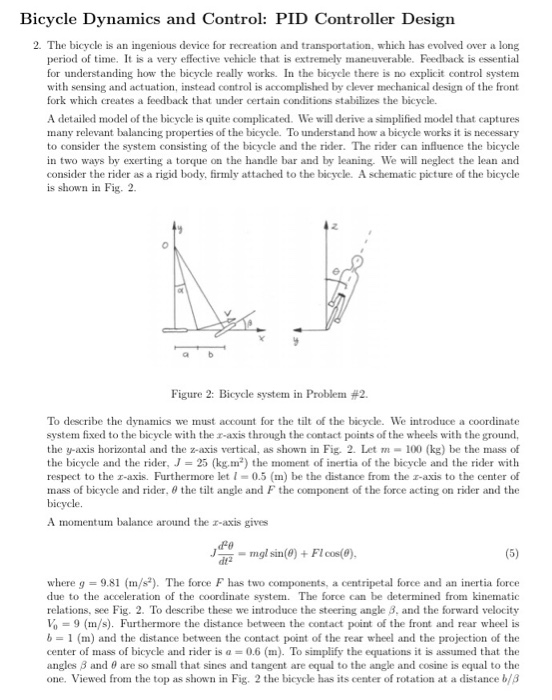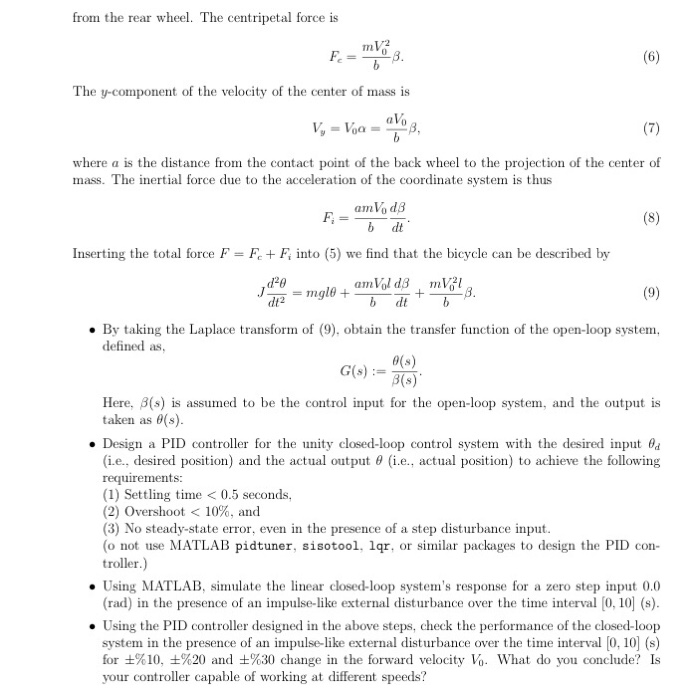The objectives are in bullet points. Im asking under CS cause you need Matlab/Simulink to answer this. Please do so as soon as you can!
Thanks! :D

Bicycle Dynamics and Control: PID Controller Design 2. The bicycle is an ingenious device for recreation and transportation, which has evolved over a long period of time. It is a very effective vehicle that is extremely maneuverable. Feedback is essential for understanding how the bicycle really works In the bicycle there is no explicit control system with sensing and actuation instead control is accomplished by clever mechanical design of the front fork which creates a feedback that under certain conditions stabilizes the bicycle. A detailed model of the bicycle is quite complicated. We will derive a simplified model that captures many relevant balancing properties of the bicycle. To understand how a bicycle works it is necessary to consider the system consisting of the bicycle and the rider. The rider can influence the bicycle in two ways by exerting a torque on the handle bar and by leaning. We will neglect the lean and consider the rider as a rigid body, firmly attached to the bicycle. A schematic picture of the bicycle is shown in Fig. 2. Figure 2: Bicycle system in Problem #2. To describe the dynamics we must account for the il of the bicycle. We introduce a coordinate system fixed to the bicycle with the r-axis through the contact points of the wheels with the ground the y-axis horizontal and the z-axis vertical, as shown in Fig. 2Let m-100 (kg) be the mass of the bicycle and the rider, J 25 (kg.m*) the moment of inertia of the bicycle and the rider with respect to the z-axis. Furthermore let l = 0.5 (m) be the distance from the z-axis to the center of mass of bicycle and rider. ? the tilt angle and F the component of the force acting on rider and the A momentum balance around the r-axis gives dmgl sin) where g 9.81 (m/s). The force F has two components, a centripetal force and an inertia force due to the acceleration of the coordinate system. The force can be determined from kinematic relations, see Fig. 2. To describe these we introduce the steering angle 3, and the forward velocity Vo = 9 (m/s). Furthermore the distance between the contact point of the front and rear wheel is b 1 (m) and the distance between the contact point of the rear wheel and the projection of the center of mass of bicycle and rider is ? = 0.6 (m). To simplify the equations it is assumed that the angles ? and ? are so small that sines and tangent are equal to the angle and cosine is equal to the one. Viewed from the top as shown in Fig, 2 the bicycle has its center of rotation at a distance b/8









